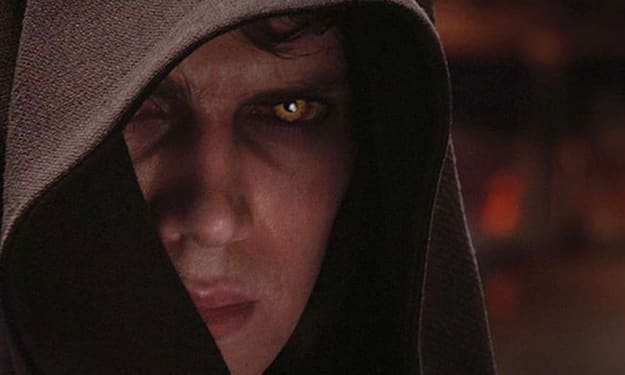A Filmmaker's Guide to: Open Endings
Film Studies (Pt.80)

In this chapter of ‘the filmmaker’s guide’ we’re actually going to be learning about literature and film together. I understand that many of you are sitting in university during difficult times and finding it increasingly hard to study and I understand that many of you who are not at university or not planning on it are possibly stuck of what to do, need a break or even need to catch up on learning film before you get to the next level. This guide will be brief but will also contain: new vocabulary, concepts and theories, films to watch and we will be exploring something taboo until now in the ‘filmmaker’s guide’ - academia (abyss opens). Each article will explore a different concept of film, philosophy, literature or bibliography/filmography etc. in order to give you something new to learn each time we see each other. You can use some of the words amongst family and friends to sound clever or you can get back to me (email in bio) and tell me how you’re doing. So, strap in and prepare for the filmmaker’s guide to film studies because it is going to be one wild ride.
Open Endings

What are they?
When a film leaves an ending open to interpretation about either what is to happen next or whether the ending is happy or not for the main character. It is a suggestion normally, that the story continues on long after the movie's narrative is over. If the narrative begins in media res then this would make even more sense because we only then see a slice of the entire life of the main character or the entirety of the story.
In literature, open endings are not very common but they are around in the modernist and post-modernist eras. Let's take a look at some examples:
- American Psycho by Bret Easton Ellis
- Fight Club by Chuck Palahniuk
- The Handmaid's Tale by Margaret Atwood
- Fahrenheit 451 by Ray Bradbury
- Requiem for a Dream by Hubert Selby Jr.
- Carve the Mark by Veronica Roth
- Station Eleven by Emily St. John Mandel
- Miss Peregrine's Home for Peculiar Children by Ransom Riggs
- Fear and Loathing in Las Vegas by Hunter S Thompson
- Mrs. Dalloway by Virginia Woolf
What about in film?

In film, open endings are more common for more dramatic slices of life based films. When we watch a film, we are not going to sit there for as long as we sit reading a book and so, even if a movie is adapted from a book, the ending may be different slightly from the original source. This leaves the director to make an open ending if they so wish.
Let's have a look at some movies where the director has chosen to leave the ending open. This is not necessarily different from their original sources and sometimes can be the result of the director's own choices in an original script. But, in terms of endings - an open ending can normally be the one that is the most frustrating to the audience but the director still decides to go ahead with it. This is to offer no closure, leaving the movie open may be open to several decisions:
- so that the director can make a second part if they so wish
- so that the director does not need to explain a convoluted ending
- so that the story does not need to rush to be closed up in every single way possible if it is already long
I'm sure there are more, but these are the main decisions that normally appear in film. Let's take a look at movies that offer open endings in all different kinds of ways from all different dramatic genres. Here is a list of some that you can investigate:
- There Will Be Blood
- No Country For Old Men
- American Psycho
- The Silence of the Lambs
- The Conjuring
- The Woman in Black
- Psycho
- Less Than Zero
- A Clockwork Orange
- 2001: A Space Odyssey
Let's now take a look at some further reading in order to understand why this happens a little bit more. For this I would like you to compare the films to their original source texts and they are the things that will be referenced int he further reading if they are applicable.
Further Reading:
About the Creator
Annie Kapur
200K+ Reads on Vocal.
English Lecturer
🎓Literature & Writing (B.A)
🎓Film & Writing (M.A)
🎓Secondary English Education (PgDipEd) (QTS)
📍Birmingham, UK






Comments
There are no comments for this story
Be the first to respond and start the conversation.